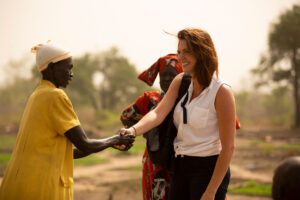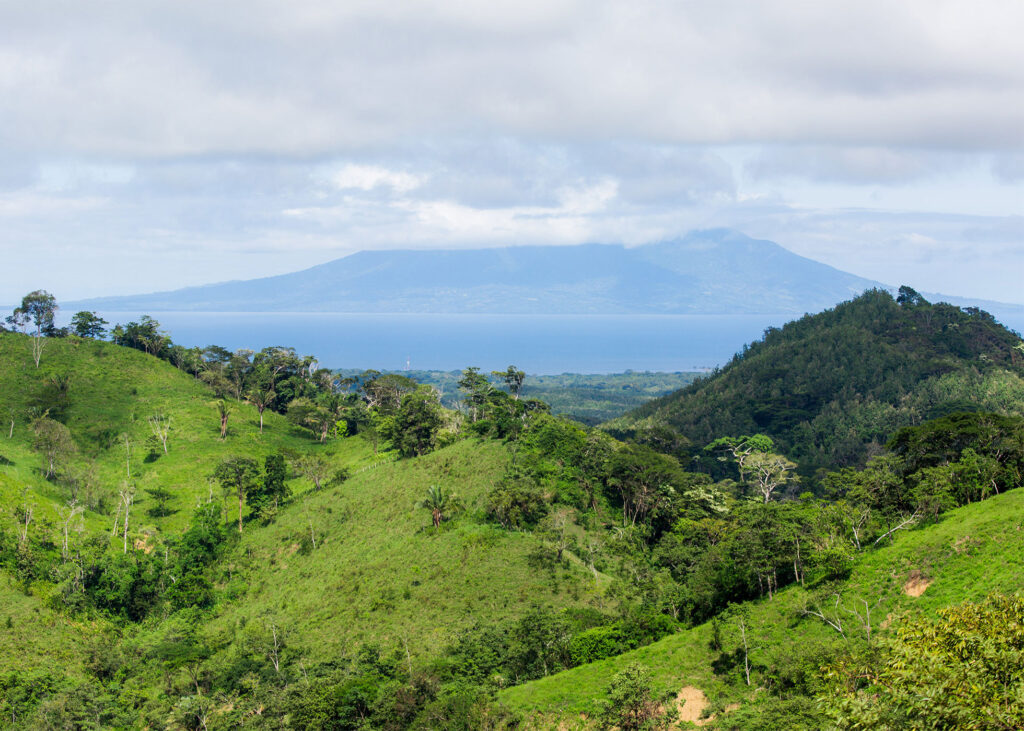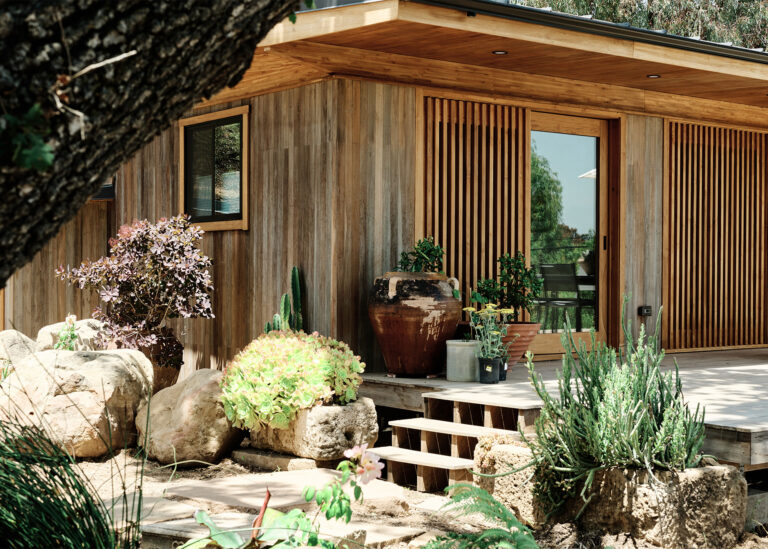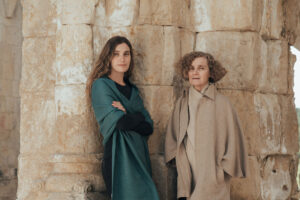
Obakki – A Purpose-Led Lifestyle Brand and Foundation
Founder Treana Peake, supports artisan partnerships and funds development work through the Obakki Foundation.
Nicaragua
Mood of living September 30.2024
After completing his Peace Corps service in Nicaragua and seeing the negative impact of abusive forestry practices, Aram Terry was inspired to create a business rooted in both social and environmental responsibility. Together with Michael Terry, he co-founded Maderas Sostenibles, committed to sustainable practices.
Over several years, the company developed tree farms on deforested cow pastures, eventually establishing a production facility in Managua that emphasizes eco-friendly methods. Utilizing a “Seed to Seat” business model, MasayaCo was created to integrate reforestation and craftsmanship. The company has turned replanting efforts into a profitable solution for combating climate change by restoring degraded land previously cleared for agriculture or grazing. Since its founding, MasayaCo has planted over one million trees across 1,300 acres of land.
In 2015, Aram partnered with Justin Terry, an American artist, and Abril Zepeda, a Nicaraguan designer, to bring artistic and cultural depth to their furniture designs. Inspired by traditional artisan craftsmanship, MasayaCo creates handmade furniture from renewable solid wood, sourced from its extensive reforestation projects.
Mood of Living: Where are you from? Where did you grow up?
Aram Terry: I was born and raised in Nashville, TN.
MoL: Where are you currently based?
AT: I have been living in Nicaragua since 2002 when I came here with the Peace Corps.
MoL: Where did you go to college? What did you study? What was your career trajectory in college?
AT: I went to Boston University and graduated in 2001 with a degree in Business Management with a focus in Finance. While in college I started to travel abroad a bit, which made me want to become fluent in Spanish.
MoL: Did someone in your childhood or an earlier experience influence your desire to do something good in the world?
AT: Both of my parents had careers driven by a sense of purpose. My mother was a Special Ed teacher in Nashville’s public school system, and my father was a lawyer who often represented the underdog. While I was always interested in business, the idea of making money for its own sake was never fully inspiring to me. I struggled to see myself pursuing a career that wasn’t grounded in a larger purpose.
I’ve also always been drawn to the physical creation of objects—whether it be buildings, furniture, or forests. I’ve always found the ability to see, touch, and feel the tangible results of my work to be a powerful motivator. When I met a French agronomist, Clement Poncon, in Nicaragua, who was running a reforestation business to grow trees, capture carbon, and sustainably harvest wood, it struck a chord with me. At this point, he had already planted over 2,000 acres. In Nicaragua, there has been widespread deforestation due to forests being converted into cow pastures. Witnessing the transformative impact these new forests had on the landscape was profound. It truly felt like a cause worth dedicating my life to.
Tree Farms
MoL: What inspired you to join the Peace Corps after college? Why did you choose Nicaragua?
AT: In the early 70s, my parents were accepted into the Peace Corps. They were all packed and set to go off to Costa Rica. However, at the last moment they decided to defer and continue their education—my father in Law School and my mother pursuing a Masters of Education. When I was graduating from Boston University, my father recognized my passion for travel and learning Spanish and suggested I check out the Peace Corps. In a way, joining the Peace Corps seemed like a natural choice, one that allowed him to live vicariously through me as I embarked on the path he might have regretted not taking.
MoL: What were your responsibilities in the Peace Corps?
AT: I was partnered with a local NGO, funded by USAID, to help manage a natural reserve—a mangrove estuary on the northern coast in Chinandega. While I was primarily focused on managing their microfinance project, I was also involved in various other initiatives that included a sea turtle nursery and mangrove reforestation. I was essentially a volunteer / intern supporting a wide range of their projects.
During my time in the Peace Corps, we discovered that many of our Park Ranger colleagues never completed their diplomas because they couldn’t afford to finish their thesis work. This led my site mate, Olin Cohan, and I to establish an NGO that funded thesis research for local university students interested in conducting their work in protected areas or natural reserves. Olin continued to manage this project for several years after we completed our Peace Corps service.
MoL: How did witnessing the negative impact of abusive forestry practices in Nicaragua influence you?
AT: When I applied to the Peace Corps, I chose to serve in Latin America and was assigned to Nicaragua. Back in 2001, there was almost no information about Nicaragua on the internet, so I went to the Nashville Public Library to learn about the country. Most of the available books focused on the revolution, Dictator Somoza, and the Contra affair, so I had no real idea what to expect. I imagined a tropical jungle, largely untouched and sparsely populated.
What shocked me upon arrival was the realization that the entire country was inhabited almost from coast to coast. Although the Atlantic coast was sparsely populated, cattle ranchers had already begun advancing 20 years ago, rapidly converting land into pastures. The jungles I had envisioned were nearly gone, with only a few reserves like Indio Maíz and Bosawas remaining on the northern and southern borders. Flying over the country, it was clear that almost every inch had been impacted by human activity, with little zinc roofs dotting the landscape as far as the eye could see.

Deforestation
MoL: Can you describe your socially and environmentally sustainable business, Maderas Sostenible, and its mission?
AT: After witnessing the deforestation in Nicaragua and meeting the French entrepreneur Clement Poncon, the idea of growing trees and reforesting as a business made perfect sense. In 2008, with an investment from my father and his business partner, we founded Maderas Sostenibles with the goal of reforesting cattle pastures to capture carbon and eventually use the wood to create sustainable products. Our first project was an 80-acre farm on the Costa Rican border called La Gavilana.
That same year, Hurricane Felix devastated the Atlantic coast, toppling over a million acres of dense forest. The Nicaraguan government began issuing permits to extract the fallen lumber. Following Clement Poncon’s lead, we explored the idea of processing this hurricane-felled timber. Thus, in 2008, Maderas Sostenibles began both reforesting and processing lumber, marking the start of our sustainable forestry efforts.
Maderas Sostenibles encompasses our forestry, milling, and manufacturing operations. From this foundation, we developed MasayaCo (handcrafted solid teak furniture), Masaya Homes (handcrafted solid teak ADUs), and Masaya Teak (solid teak building materials). Together, these companies form a business model we call “Seed to Seat,” which revolves around using wood as a renewable and replenishable natural resource.
People have always relied on natural resources, and that won’t change. However, our thinking as a society needs to evolve to prioritize resources that can be easily replenished while adopting practices with minimal harm to the environment. Or better yet, practices that can fulfill our need for resources, while at the same time help to repair damage done by outdated systems from generations.
Today, our mission across all our companies is to combat climate change through reforestation and sustainable design. This mission drives our “Seed to Seat” model.
The Nursery
MoL: What were the initial steps to creating your company? Why did you choose to create a for-profit company instead of an NGO? How challenging is it to establish a for-profit company in another country?
AT: In my opinion, economic forces drive change in our world. Deforestation in Nicaragua happens because cattle ranching is the most straightforward way for people to earn a decent living. The deforestation that occurs as a result isn’t necessarily the fault of those who do it—they’re simply trying to feed their families and have no viable alternatives.
To truly address the deforestation problem, we need an economic alternative to cattle ranching. Simply put, a farmer needs to be able to make more money growing trees than cutting them down for pasture.
NGOs are only sustainable so long as they have funding. A viable business, on the other hand, has a life of its own and can grow and scale in ways that are unimaginable. Establishing a business in Nicaragua is surprisingly straightforward and can be done in a matter of days. The government actively encourages investment, especially in sustainable ventures like reforestation.
MoL: Who is your Co-Founder? When did you partner with your artist brother, Justin Terry, and Nicaraguan designer, Abril Zepeda? What roles do they play in the company?
AT: From 2008 to 2011, Maderas Sostenibles primarily exported rough sawn lumber and teak logs to the Caribbean, the US, and Asia. These materials came from hurricane zones or reforestation projects in Nicaragua, with much of the teak destined for the Indian market.
In 2012, we began receiving local carpentry work for small hotels and beach houses. Around this time, I started dating Abril Zepeda, a local fashion designer from Masaya. Abril was making sandals from “Manila” cord, a cotton material used to weave hammocks in her hometown. Some of our projects required woven chairs, which gave me a great reason to spend more time in Masaya with Abril.
Abril knew many local weavers and took it upon herself to learn the craft. As she became more skilled, her creativity flourished, and she started developing her own patterns, often taking inspiration from aspects of Nicaraguan culture making her designs true works of art. These colorful woven chairs became a huge hit which significantly boosted our young company’s business and has developed into MasayaCo’s signature furniture line.
Justin was working in New York at the time and decided to list the chairs on Etsy, which quickly proved successful. This led to us selling on our own Shopify site as well as Wayfair and other platforms. Justin was instrumental in bringing our chairs into the US market, providing a crucial growth channel for our company as well as setting up an initial framework for how the company is branded.
Teak Factory
MoL: How is your company combating climate change through reforestation and sustainable design? Was the primary motivation of your business to help the environment, to build a sustainable furniture company, or both? Please explain your business model from seed to finished products.
AT: We began as a reforestation project, and the transition to designing and building furniture, homes, and teak building materials came later, but naturally. Once you start growing and processing trees, you’re in the business of selling raw materials. When we began turning that raw material into finished products and bringing them to market, we became a vertically integrated company. This is what we call “Seed to Seat.”
“Seed to Seat” involves year-round cultivation of seedlings at our nurseries, which are planted before the rainy season. Each year, we donate approximately 50% of our seedling yield to local communities—this year alone, we donated 30,000 seedlings—to expand reforestation efforts in Nicaragua beyond our own forests. When seeds are planted, a 20-year growth cycle begins, during which smaller trees are periodically thinned to make room for larger ones. Our manufacturing process utilizes the entire tree. For example, smaller trees, which are typically burned due to their size, are repurposed in the fabrication of indoor furniture and solid wood glue-lams, while sawdust is reused as biomass.
We also employ and train a diverse range of professionals, including carpenters, forestry managers, architects, designers, salespeople, and weavers. Being vertically integrated allows us greater control over our material and manufacturing chain. This gives us full traceability of our teak, reduces our carbon footprint by minimizing oceanic shipping, and makes it easier to ensure our products are made in a fair work environment.
The primary goal of our business has always been to plant as many trees as possible. To drive this reforestation effort, we need a market specifically for the reforested wood we grow and mill. The furniture and prefab buildings we create generate demand for reforested wood, which in turn fuels further reforestation.
The simple answer to why this is sustainable is photosynthesis.
Trees absorb CO2 from the air, and through photosynthesis, they release O2 (oxygen) while storing C (carbon) in the cellulose of the tree—what we know as wood. There’s no need for complex new technologies to combat climate change. In my view, giant machines designed to capture CO2 are unnecessary when nature already provides the solution: plant trees!
The products we sell are roughly 50% captured carbon because wood is made from carbon absorbed from the atmosphere. When you buy our furniture or buildings, you’re essentially purchasing carbon that has been removed from the atmosphere and locked into a long-lasting, heirloom product.
Our business model, from seed to finished product, is rooted in solving climate change through reforestation. This is the core mission driving everything we do.
Forest Reserve
MoL: How do trees benefit the environment? What are the consequences when they are cut down and not replanted?
AT: Of course, the process of photosynthesis is key. Trees pull in CO2, release O2 (oxygen), and capture C (carbon). The oxygen is vital for life, while excess CO2 contributes to the greenhouse effect.
Forests are lifelines. They regulate our climate, support biodiversity by providing habitats for countless species, and sustain livelihoods for millions of people. When a forest is replaced by a cow pasture, the environmental impact is severe. Cows emit methane, a potent greenhouse gas, the soil erodes, creeks dry up, and farmers often use chemicals to plant and promote invasive grasses. This creates an environmentally destructive cycle.
Reforestation, particularly when it replaces cow pastures with forests, offers a powerful solution to climate change. Reforestation cools the earth by providing a tree canopy, which restores groundwater reserves. Habitats for wildlife are restored and life becomes more abundant, in general.
Climate scientists estimate that 7-9 billion tonnes of carbon need to be removed from the atmosphere to mitigate climate change. Each acre of new trees captures 6-7 tonnes of carbon per year. If humans planted 2 billion acres of new forest—an area roughly the size of the USA—we could significantly slow the progression of climate change. Yet, instead of expanding forests, humans are currently removing around 25 million acres of forest annually, primarily for agriculture.
It’s clear that combating climate change requires a multifaceted approach: halting deforestation, reforesting on a massive scale, and reducing emissions through clean energy. Reforestation is a simple yet incredibly effective part of this strategy.
MoL: What are the first steps in establishing tree farms on deforested cow pastures? How long does it take for the trees to grow before they can be used for your products?
AT: Pasture land can be secured for reforestation either by purchasing it or by creating rental agreements with local landowners. In either scenario, the local community will yield economic benefits from the reforestation process. The land is then surveyed and prepped for planting using natural methods. The planting process begins with our nursery, where we germinate 40,000 to 60,000 trees each year for our reforestation projects and to promote reforestation within the local community.
These trees take about 20 years to reach maturity. We plant them close together (3 meters by 3 meters) so they grow tall and straight. As they grow, the trees begin to crowd each other, which slows their growth. To manage this, we perform several thinnings during the 20-year cycle. We typically plant around 500 trees per acre, but only about 150 remain for the final harvest.
Starting around year 8, the thinnings produce wood that we can use for our prefab houses and furniture. By year 16, the trees yield dense, mature wood that’s ideal for outdoor furniture and decking.
I should note that not all of the teak found in our products is sourced directly from our forests. However, all of our wood is sourced either from our forests or from similar reforestation projects in Nicaragua and our products carry the FSC® 100% certification label.
Manufacturing
MoL: How many trees have you replanted in your reforestation project? How many tree farms do you own, and where are they located?
AT: Since 2008, we have produced over 1,200,000 trees in our nurseries. These trees have been planted in the following projects:
MoL: What sustainable practices do you employ in your farms?
AT: The most sustainable practice we employ is the simple act of turning pasture back into forest. Throughout this process, we avoid using chemicals and pesticides as we transform grass pastures into thriving forests. Additionally, we grow organic food on some of our farms, which is primarily used to feed our workers.
MoL: How are you supporting local communities and farmers? How are you protecting natural resources and wildlife?
AT: Our farms are 30-40% native forest reserves. We plant trees on the pasture areas and replace the invasive grass with wood species. We also preserve the hilly terrains, creeks, and areas of native forest for conservation. These forests are home to sloths, three types of monkeys, anteaters, countless birds, and other wildlife. Our farms help replenish local water sources and create microclimates that serve as refuges for wildlife during the dry season.
We also support local communities by employing farmers at above-market wages with full benefits. Additionally, we provide them with trees to plant on their own farms as a long-term sustainable investment. At our factory, we employ highly trained craftsmen, designers, and managers who earn competitive local salaries while gaining world-class skills in developing products for demanding markets.
MoL: What certifications does your company have? What are your future sustainability goals?
AT: Our factory is FSC certified, and we process wood from our own tree farms as well as from other reforestation projects. Our goal is to be the primary outlet for reforestation efforts, adding profitability and viability so that more people are encouraged to invest in reforestation.
We are transitioning to a low-VOC green finish from Sherwin Williams for our products, and we are also working towards achieving B Corp certification, along with other engineering certifications for our glu-lam beams and other products.
Additionally, we are funding a project to transition our entire factory to solar power, aiming for full operational capacity by 2025. This will ensure that our value-added processes are powered by green energy.
We also contribute to clean energy by sending all of our offcuts and sawdust to a biomass power generation plant in Nicaragua called Green Power http://www.montelimar.com.ni/. This ensures that any material not used in creating heirloom-quality products is converted into energy through a carbon-neutral process, providing clean energy to Nicaragua’s grid.
Additionally, we are in the process of establishing an Annual Sustainability Report that we intend to publish at the end of Q1 of each year. The intention of this report is to transparently assess where we stand currently across the company in terms of sustainability and set clear and articulate goals for the future.

Aram in Forest Reserve
MoL: Where is the production facility fabricating your furniture and wood designs? Why do you primarily grow and utilize teak wood for your products? Do you use any other types of wood?
AT: Our factory is located in Managua and encompasses our nursery, sawmill, kilns, design team, marketing team, furniture production, weaving, and home production. The facility is situated on an 11-acre property with approximately 150,000 square feet of buildings.
When we first began reforesting, our goal was to recreate a native forest using only local species. However, our initial mixed plantings didn’t yield the best results. Some species tended to dominate, causing most of the other trees to stagnate and stop growing. Additionally, we found that even after 12-15 years, many native species were still mostly sapwood and not yet suitable for crafting.
Teak solved both of these issues for us. It grows in a uniform, proper formation and produces dense, usable wood relatively quickly. Teak can be harvested starting around year 8, making the production and economic viability of our teak stands optimal. The wood is very stable, with minimal movement or contraction during drying, and by year 14, it becomes a dense, oily wood ideal for exterior use.
Planting teak is a long-term, risky investment, but it provides us with wood that we know will be of high quality when it’s time to harvest. I want to emphasize the importance of financial viability in reforestation projects. People cut down forests to create pastures because it offers a secure way to make a living. By planting teak, we provide a sustainable and economically viable alternative that encourages more people to invest in reforestation.
MoL: Where do you sell your products?
AT: We have stores in Panama City (Panama), San Jose (Costa Rica), Managua (Nicaragua), Berkeley (California), and Nashville (Tennessee). We also sell online, shipping to customers throughout these countries, and cater to hospitality projects across Latin America and the USA. Additionally, we sell in Canada through Wayfair’s platform.
MoL: Can you tell us about Masya Homes?
AT: I co-founded Masaya Homes in 2020 with Olin Cohan, whom I met during my Peace Corps service. Olin is a GC in Northern California so that fact, our long friendship, his love for Nicaragua, and his knowledge of home building made it a natural match. Additionally, the ADU market in the US had just taken off and we were looking to have a product that consumed more reforested wood as it was clear that furniture did not create an offtake for all types of wood we were growing in our reforestation projects. We designed our prefabricated houses specifically to consume the various types of wood harvested from our reforestation projects.
For example, we use 16-year-old mature teak for exterior cladding, flooring, and decking because of its durability and high oil content. The wall framing studs are made from 8-12 year thinnings, while the interior wall panels are crafted from younger, eight-year-old teak, which we turn into finger joint panels and then paint. We also incorporate Glu Lams—large, laminated beams made from our shorter and narrower offcuts that are finger-jointed and pressed together in a beam press.

Masaya Home
MoL: What advice can you give to the next generation who wish to pursue careers with a meaningful impact but don’t know where to begin?
AT: My advice is to stay curious and always be learning. People often ask if I studied woodworking or engineering, and they’re surprised to learn that everything we’ve accomplished was learned empirically—through hands-on experience.
Remember, just because the world does things one way doesn’t mean you can’t find a different path.
Photography courtesy of MasayaCo

Founder Treana Peake, supports artisan partnerships and funds development work through the Obakki Foundation.

ÁBBATTE creates handmade textiles in Spain on the grounds of a 13th -century Cistercian monastery in the town of Segovia.

Driven by ethics as well as aesthetics, the Armadillo design studio creates rugs that are made with natural materials and sustainable processes.